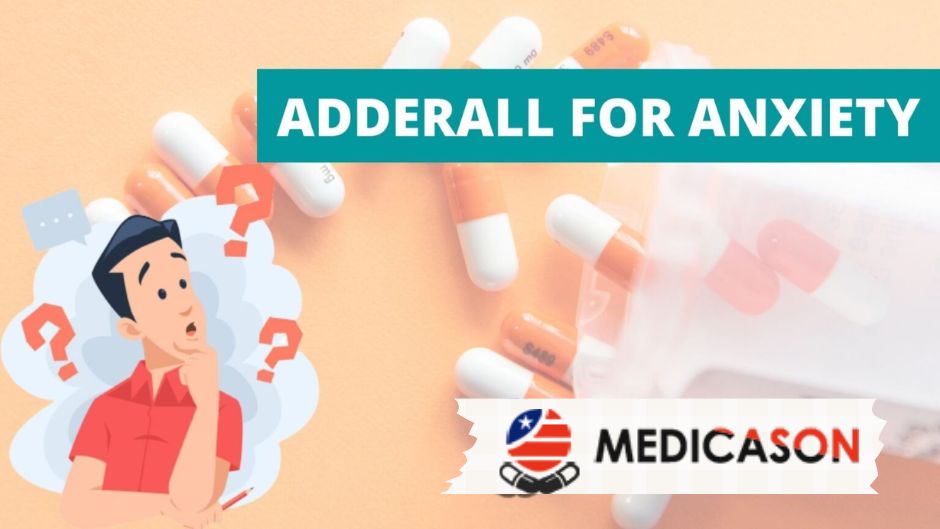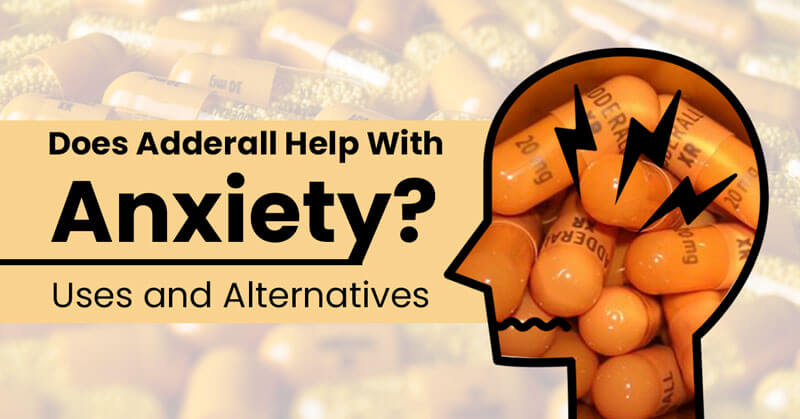
What is Adderall?
It contains amphetamine and dextroamphetamine, which operate on brain and nerve molecules, causing hyperactivity. It is therefore used to treat ADHD and Narcolepsy.
Adderall is a drug that can make you feel more awake and alert. Prescription stimulants raise blood pressure, heart rate, and respiration, making people happy. Adderall is a drug on the second list of medicines that can be dangerous to your health.
It also helps narcoleptics stay awake during the day. Adderall comes in two forms: oral tablet and XR extended-release oral capsule. As a regulated substance, Adderall may cause physical and psychological dependence.
What Does Adderall Do?
Adderall is generally used to treat ADHD symptoms. Adderall can help with focus. While Adderall can help you focus, it also has side effects.
Dopamine and norepinephrine both levels in the brain are raised by taking oral Adderall. These chemicals make you happy and excited. This is how it works: Norepinephrine helps you get excited, and Dopamine helps you stay focused on the task.
The drug raises our body temperature, blood pressure, and heart rate, keeping us awake, alert, and vigilant. It also controls our appetite.
However, prolonged drug use causes a change in our brain’s chemical makeup, resulting in independence.
Because Adderall interferes with Dopamine, our brain becomes dependent on it, not producing as many chemical messengers as it used to and craving Adderall to stay balanced.
Does Adderall Help with Anxiety?
Adderall reduces anxiety by raising dopamine levels in the brain. Dopamine is a neurotransmitter that affects our ability to focus. We tend to feel anxious or stressed when our brains lack Dopamine.
Dopamine influences motivation and reward. Low Dopamine means we are unmotivated. This demotivates and disinterests us in life.

Adderall can either relieve or worsen anxiety. Your mental state determines its effect. If you have ADHD or other related mental health issues, Adderall may help you relax.
Otherwise, Adderall may exacerbate your anxiety symptoms. Adderall is a prescription medication that contains amphetamine-dextroamphetamine, a powerful stimulant. Surprisingly, its push affects people with calm ADHD.
Many students and professionals use it as a study drug. While Adderall increases focus, it can also cause anxiety in non-ADHD people. The difference may be due to differences in brain chemistry and Adderall’s effects.
Adderall Dosages
Before taking a new dose of Adderall, patients should always talk to their doctor or pharmacist. Your doctor usually starts with a low amount and adjusts it as needed after getting a proper diagnosis.
It is possible to get two types of Adderall: Adderall IR (immediate-release) and Adderall XR (Extended-Release). Both types have the same dosage options but minor differences between them. Adderall IR can be taken many times in 24 hours in equal doses, but Adderall XR can only be taken once a day in the same way. The amounts for both are the same:
- 5 mg (IR and XR)
- 7.5 mg (IR only)
- 10 mg (IR and XR)
- 15 mg (IR and XR)
- 20 mg (IR and XR)
- 25 mg (XR only)
- 30 mg (IR and XR)
Not for children under three years old. Start with 2.5 mg daily in children 3 to 5 years old, and increase by 2.5 mg weekly until optimal response is achieved.
Start with 5 mg once or twice daily for children six years and older, and increase by 5 mg weekly until optimal response is achieved. Rarely will it be necessary to exceed 40 mg per day—first dose upon awakening; subsequent amounts every 4 to 6 hours.
The effects of IR usually take an hour to feel, but this varies depending on the individual. If you don’t feel any effects, your body may be blocking the medication’s action, such as a high vitamin C intake. Take the medicine an hour before eating or taking vitamin C. A higher dosage may be required in some cases; contact your doctor if this is the case.
Side Effects of Taking Adderall
In the US Food and Drug Administration’s Adverse Event Reporting System (FAERS), there have been 6145 reports of side effects from 1994 to March 31, 2020, when the brand names Adderall and Adderall XR were on the market. Three thousand two hundred fifty-one of them were severe, and 202 people died in them, so that’s how many there were.
There were a lot of FAERS reports from 2018 and 2019 in this set. Because FAERS data is voluntary, the FDA can’t figure out how often these side effects happen or if Adderall caused them.
It’s not clear whether side effects worsen the more Adderall people take. Still, Canadian researchers say that the drug has a low rate of side effects similar to other stimulants, according to an article in Paediatrics & Child Health.
Some of the side effects:
- Fatigue
- feeling abnormal
- Insomnia
- Depression
- Headache
- Weight loss
- Nausea
- Decreased appetite
- Aggression
There isn’t enough evidence from clinical trials to say if side effects are different for men and women. Some of these side effects may go away as the body gets used to taking medicine. This is different for everyone, though. When you stop taking Adderall, most of these side effects stop, too.
Some of the Symptoms after taking Adderall
Anger: People are more susceptible to agitation and irritation than previously. They become easily enraged by seemingly insignificant things that do not bother them.
Anxiety: Individuals experience minor anxiety due to reduced brain activity after the stimulating effect of the drug has worn off.
Fatigue: It is also possible to feel tired, lethargic, and drowned out due to the recovery from the excess energy built up while on Adderall dependence medication.
Depression: Those experiencing crash symptoms are more likely to experience depression because the “d-amphetamine,” which releases excess Dopamine and elicits feelings of delight and pleasure, is no longer being released into the body.
Unfocused and distracted: After stopping Adderall, one becomes easily distracted and loses the ability to concentrate and maintain focus for an extended period.
Slow thinking: Symptoms include a slowed cognitive process and disorganized, chaotic, and messy thought processes.
Hopelessness: The constant feeling of despair and worthlessness is also experienced by some people; however, this symptom gradually subsides and fades away over time.
Mood swing: There are frequent mood changes and changes in mood throughout the day.
Disruption in the sleep cycle: When dealing with the crash symptoms, those experiencing trouble and turmoil in their sleep cycle may undergo episodes of insomnia as a result.
In conclusion, while Adderall is not a cure-all for anxiety, it can be an effective drug in managing the disorder. If you are struggling with anxiety, talk to your doctor about whether Adderall could help you. Additionally, continue working on addressing the root cause of your stress so that it can be less likely to return. You have to keep in mind that there is no one-size-fits-all approach to managing anxiety; what works for one person may not work for another.

Leave a Reply